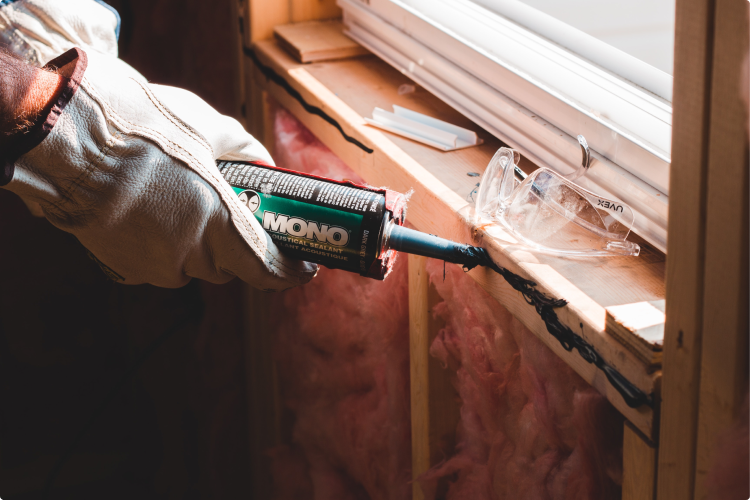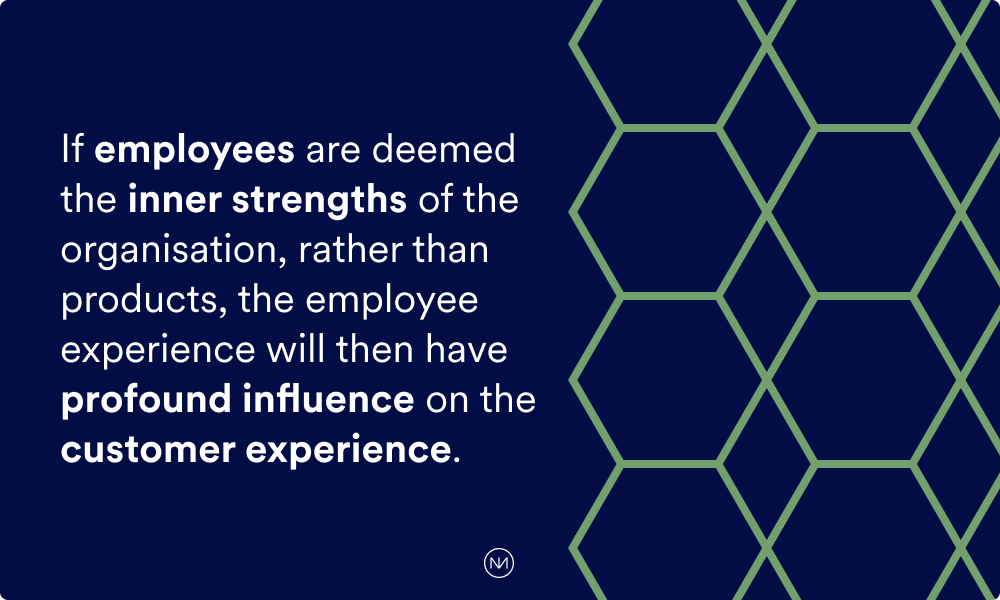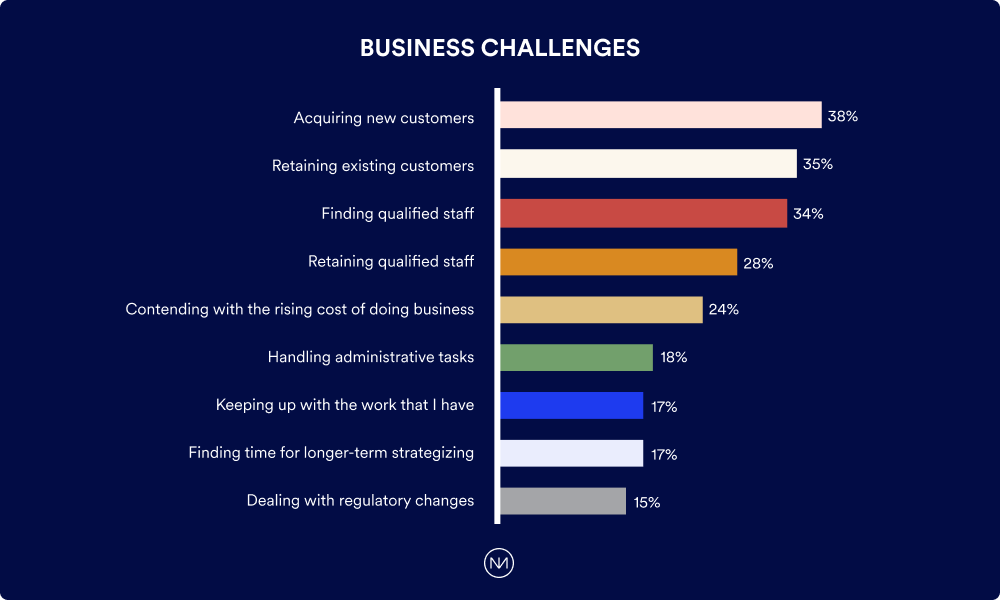Julianna Carlson-van Kleef | 09/02/2022
Building better employee and customer experiences
Companies throughout the world, regardless of business sector, strive to provide enjoyable customer experiences and overall positive customer journeys to retain customers.
We can see this when comparing the Home and Professional Services sectors, two broad business sectors that may not appear to have much in common at the outset, but do in fact share similar top challenges, including customer acquisition and retention.
Before investigating these top challenges, let us first look at why we could assume these sectors do have not much in common. This could be due to the different industries and clients that these sectors encompass and serve. 
The Home Services sector comprises many industries and businesses whose main purpose is to provide services for the home (and sometimes commercial businesses); including cleaning, construction work, electrical work, flooring, home repair, installations, landscaping, plumbing, roofing, and more.
While the Home Services sector may lean more towards B2C, the Professional Services sector may lean more towards B2B.

The Professional Services sector covers many industries and job types whose main purpose is to provide specialized knowledge, expertise, and services to clients; including accountants, architects, digital and creative marketing professionals, engineers, financial advisers, IT specialists, lawyers, and more.
In our recent blog post, we wrote “Any company, no matter the size – be it a lone freelancer or a large enterprise – relies on generating leads and maintaining customers to keep revenue coming in.”
Yet, we are also curious to explore how these top challenges of finding and retaining customers has been impacted by the pandemic for these two sectors.
The pervasive pandemic effect on the home and professional services sectors.
The Professional Services and Human Capital
The Covid-19 pandemic has impacted the home and professional services in different ways. Grant Thornton’s Professional services firms prove their resilience notes “A major advantage that professional services firms have over businesses in other sectors is their ability to pivot quickly as circumstances change. They tend to be less levered than many sectors and they don’t have large amounts of cash tied up in inventory. Instead they rely on human capital, which they can scale up and down according to their demand pipeline. They can also reskill their people to focus on new areas of demand.”
In the Harvard Business Review’s Professional Services’ Keys to Success white paper, it is noted that “Talent has always been a professional services firm’s greatest asset. Today, staying at the forefront of rapidly changing business and technology trends is what makes it possible for professional services firms (PSFs) to help their clients transform to a digital, data-driven future.”
Digital transformation and the turn to remote work has definitely had an impact on this sector and the employees within. And while remote work has played a large role in the Great Resignation or Great Reassessment, and poses a viable threat for PSFs to lose skilled employees, the potential need for layoffs is still prevalent.
The same Grant Thornton article notes “27.7% of professional services firms have either taken or plan to make tough staffing decisions as part of their Covid-19 strategy to ensure business continuity and viability. These include staff redundancies, using governmental support mechanisms, reducing pay and offering unpaid leave.”
Yet, taking steps towards downsizing is not without risks. As the Grant Thornton article notes, “...Human capital management carries high reputational risks if it isn’t handled sensitively. The firms that are most likely to flex successfully will be those with a strong culture, and which have built up trust and goodwill among their employees. Indeed, even in these difficult times, firms need to demonstrate integrity and embed their core values in their DNA. A firm’s culture can be its shop window to clients and its biggest recruitment and retention tool for its people.”
Here we see that at the foundation, company values shown through tough pandemic times can not only impact current employees but signal to customers and future employees about whether a particular PSF is a place to do business.
Yet while PSFs were focused on employees and a digital transformation, the Home Services Sector was focused on a short supply of work, labor, and supplies.
The Home Services boon meets short supply
In regards to home services, Forbes describes how the pandemic has exacerbated problems already on the rise: “Since around 2018, the United States has seen a shortage of tradespeople available to complete projects like kitchen remodels, bathroom remodels, flooring, and electrical work. In addition to this, the supplies that they need to complete their jobs—including wood and metal–aren’t available due to a shortage of materials, created as a result of the Covid-19 pandemic, so supply prices are skyrocketing.”
Yet, there have also been positive takeaways from the pandemic in the Home Services sector. In the same Forbes article, Lexie Pelchen and Samantha Allen write: “Americans have learned not to take their homes for granted. Despite the labor and materials shortages and increased costs for remodels and upgrades, home improvement projects have persisted, and at a rate that is higher than ever.”
With people spending more time at home, either working remotely or due to widespread shutdowns, people have more time to see what could be improved around the home. 
In Improving America’s Housing 2021 by The Joint Center for Housing Studies of Harvard University, the report notes that “The pandemic has in fact been something of a boon for the remodeling industry by forcing a variety of housing and lifestyle changes that encourage improvement spending.” The same report also noted that while the Home Services sector bounced back relatively quickly, some trades did so earlier than others, as exterior contractors reported a surge in activity earlier in the pandemic compared to firms specializing in interior projects.
Yet, the staffing problem remains. As Forbes writes: “As long as we continue down this road where there are more open positions in the trades than there are workers to fill them, we can expect to see increased prices and longer wait times for home improvement projects.”
How ultimately will that impact the Home Services businesses and the overall customer experience? And more generally, how does staffing and the employee experience impact the customer experience?
The New Inside-Out approach: Shaping customer experience through employee experience
The customer experience (CX)
With businesses dependent on attracting and retaining customers, it is no surprise that the terms customer journey and customer experience (CX) are quite prevalent in marketing. Customer journey is a marketing buzzword that tries to explain the life cycle of a (potential) customer and all the ways that that customer interacts with a particular business. What convinces a customer to purchase? What convinces a customer to return and buy again? Or what convinces a customer to look elsewhere? Customer Experience (CX) is a term to try to explain what goes right – and wrong – in the customer journey. What are sources of friction? How could processes be simplified?
Does the Outside-In approach provide the best value for customers?
This customer focus can influence whether a business has an Outside-In or an Inside-Out approach. In the article, The Outside-In Approach to Customer Service, Sara Jane Gilbert writes, “An outside-in perspective means that companies aim to creatively deliver something of value to customers, rather than focus simply on products and sales.” In the article, Gilbert interviews Harvard Business School’s Ranjay Gulati about these different approaches, who states “Most companies with an inside-out perspective become attached to what they produce and sell and to their own organizations. In contrast, the outside-in perspective starts with the marketplace and delves deeply into the problems and questions customers are facing in their lives.”
Redefining the Inside-Out approach
Yet, what if the Inside-Out approach was more reliant on, and defined by, different variables of the business, such as employees, rather than just the products of the business? Elisabet Lagerstedt gives this definition in Business Strategy: Are you Inside-Out or Outside-In?: "The Inside-Out approach is guided by the belief that the inner strengths and capabilities of the organisation will make the organisation prevail. The Outside-In approach is instead guided by the belief that customer value creation, customer orientation and customer experiences are the keys to success."
If employees are deemed the inner strengths of the organisation, rather than products, the employee experience will then have profound influence on the customer experience.
The article, What Professional Service Firms Must Do to Thrive, describes this symbiotic relationship between employees and customers: “Whom a practice hires affects the clients it can serve, the clients it serves affect how the skills of its professionals evolve, how the skill set evolves affects the clients the practice can acquire in the future, and the cycle keeps repeating.”
In Professional Services’ Keys to Success, this is furthered with: “...The best PSFs look to achieve their talent goals by focusing on the employee experience (EX). They understand that making it easy for employees to do their best work pays off in higher levels of engagement and effort, resulting in more satisfied clients.
With the importance of the employee experience, it is important to also look at how companies view hiring and retaining employees.
Research: A closer look at the Home and Professional Service sectors
To understand the key challenges of the Home and Professional Service sectors better, Localogy and Mono Solutions commissioned a survey in October 2021 of more than 700 small businesses across Denmark, Germany, and the United Kingdom. The report, A Closer look at Europe’s Home and Professional Service Sectors was published in November 2021.
The Find and Retain Challenge(s) for Businesses
This link between customers and employees was also seen in our research. While acquiring new customers (38%) and retaining existing customers (35%) were reported as the top two business challenges these SME owners faced, these were closely followed by finding (34%) and retaining qualified staff (28%).

With the rising emphasis on employees, EX, and the impact on CX, it is notable then that “Finding Qualified Staff” nearly rivals “Retaining existing customers.” Interestingly, this could also mean that increased internal efforts for finding and retaining staff could also prove beneficial towards attracting and retaining customers, addressing multiple challenges in one fell swoop.
What does this mean for you?
If you are a small business in either the Home or Professional Services sector and are interested in learning more about common challenges, as well as business practices to attract and retain customers, then this report may provide you with new insights and avenues of interest.
If you are a digital reseller, then this report is a great asset to help you better understand the Home and Professional Service sectors and how you can help – by providing services to strengthen a company’s brand, internal communication processes, and ease the recruitment process.
